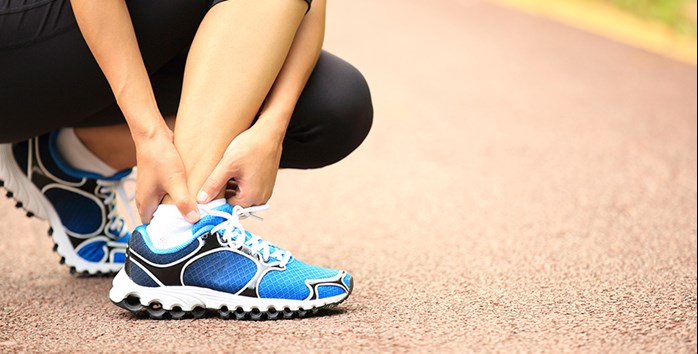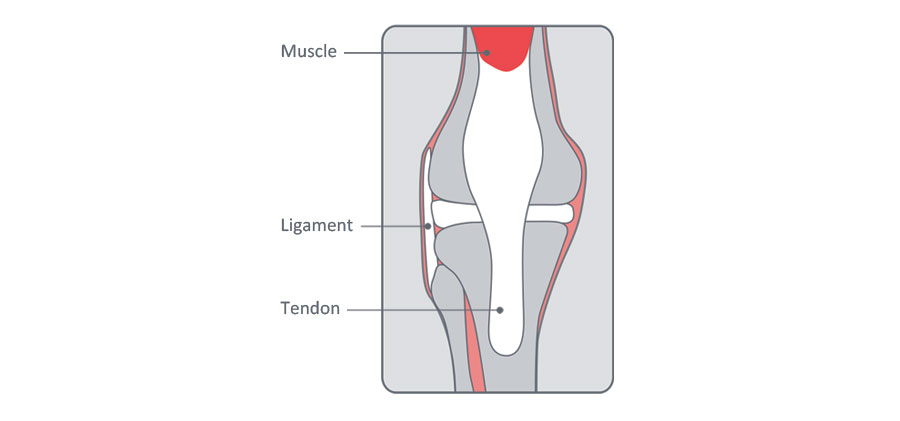
A lot of us have experienced a strain or sprain in our ankles or wrists or some other body part at one time or another. Sprains and strains are very common for sportspersons and those indulging in heavy physical activity daily. However, they can also occur when one is involved in everyday tasks such as housework, office work or even gardening.
The pain arising from both is often similar and can leave you confused; however, they are distinctly different and they affect different areas of the body.
While a strain is caused by a damage to muscle fibres (like with a tear or an intensive stretch), a sprain is caused by a damage to the ligaments. Ligaments are tough bands of connective tissue that fuse together over bones in a joint.

How are sprains and strains different?
Strains
We have outlined the fundamental difference between strains and sprains above. Further to our understanding of strains, it must be noted that acute strains occur immediately after an injury to the muscle or tendon. A strain may also be chronic, in that it can develop over time from overuse of muscles and tendons with prolonged repetitive movement (such as practice during sports or lifting heavy weights in the gym).
Symptoms of a strain include pain, muscle spasm, muscle weakness or inflammation around the site of the injury. Muscles that are particularly vulnerable to strains are in those in the back and the large muscles of the legs, such as the hamstring.
Sprains
Sprains are almost always caused by a blow or fall that knocks the joint out of position. This misalignment of the joint stretches or even tears the ligament surrounding it. Typical symptoms of sprains include pain, bruising, swelling and inflammation. The joints most vulnerable to a sprain depend on the kind of activity and the joints taking the most impact. For example, jumping (for such sports as basketball, volleyball and netball) or sprinting/walking on an uneven surface can cause foot, knee or ankle sprains. Meanwhile, you could get a wrist sprain simply by falling on it.
How to help prevent sprains and strains
-
- Never forget to warm up before starting the exercise or sport
- Stretch the body every day to increase flexibility and tone the joints and muscles
- Wear the right type of shoes based on the activity they are meant for. The shoes must fit well and should be discarded once the sole is worn out
- Be gentle when you exercise, instead of rushing into high intensity workouts all at once. Build on your fitness programme gradually to build joint and muscle strength. Your doctor can check your exercise regimen if you have never exercised before.
- Never run on uneven surfaces
- Never exercise when your joints are painful or if you are tired
- Eat a nutritious diet including all the major food groups
What should I do if I have a strain or sprain?
Avoid heat therapy, massage, alcohol and running in the first 72 hours after a sprain or strain.
PRICE stands for Protection, Rest, Ice, Compression and Elevation. Start by protecting the injured area to prevent further damage. It is better to stop exercising for a while, applying an ice pack on the painful area (not directly on the skin) every few hours for about 20 minutes every day. Bandage the painful area or use elastic wrap to apply steady compression to limit the swelling. You must also keep the injured area elevated above the level of the heart to reduce swelling – do this by resting the painful joint on a pillow.
Pain relievers: Over-the-counter pain relievers help with pain management.
See your doctor: In most cases, sprains and strains heal after a few weeks. But some may take longer than others to heal, depending on the severity of the injury. If the pain shows no signs of diminishing, or if it becomes more intense, you should certainly see your doctor for treatment and the right medication.
